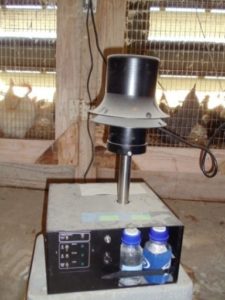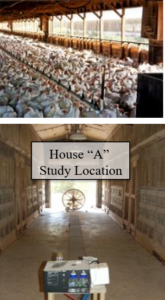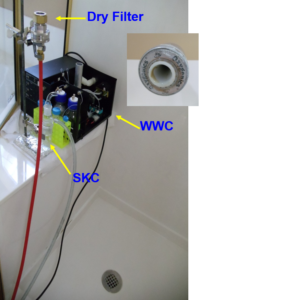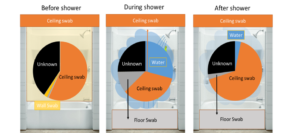Wetted-Wall Cyclone (WWC) Sampling Systems
-
Three autonomous scaled systems:
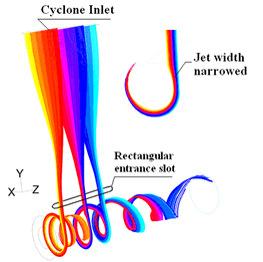
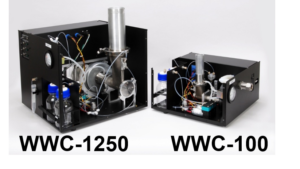
-
100 L/min
-
400 L/min
-
1250 L/min
-
- Concentration Factor: ∼ 10 ^ 6
- Cut Point: ∼ 1 µm AD
- Low Cut Point (LCP): < 500 nm AD
Low Cutpoint LCP-WWC- How It Works
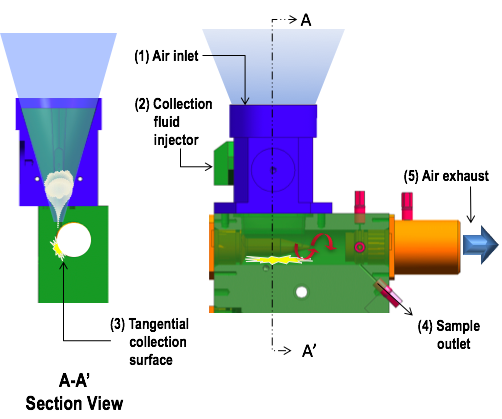
- Collection of aerosol particles starts with particle laden air being drawn into the Air Inlet.
- Atomized collection fluid is injected into the air stream.
- The Collection fluid and particles impact on a tangential collection surface, entraining the particles in liquid.
- Air shear continuously transports the fluid from the collection surface toward the exhaust. The liquid sample is skimmed off and continuously extracted at thesample outlet.
- The air flow then exits the exhaust.
High collection efficiency for Polystyrene Latex beads (PSL) and bioaerosols (virus, bacteria, fungi)
Sampling in Mass Transit Center
- WWC and dry filter sampler collocated
- Sampled over 3 days
- Collected samples 3x/day
4 logs more bacterial colonies from WWC versus dry filter collector.
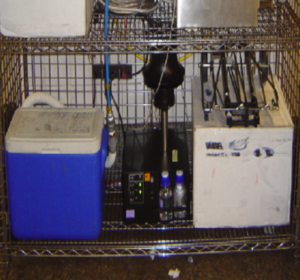
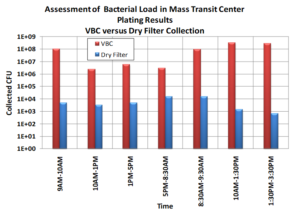
Sampling in Poultry Facility
- WWC and dry filter sampler collocated
- Sampled over 5 days
- Collected samples 3x/day
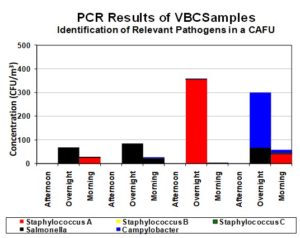
- PCR for pathogens
- Staph A, B, and C
- Salmonella
- Campylobacter
Dramatic increase in pathogen level detected after hosing floor.
Sampling at Corn Harvesting and Processing
WWC to sample for the fungus Aspergillus flavus (A. flavus), in cornfields and in a corn “Shelling Room” at Texas A&M. A. flavus produces the harmful aflatoxin.
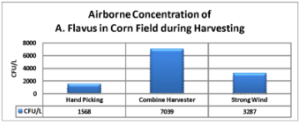
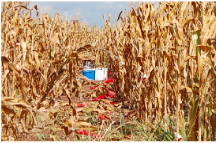
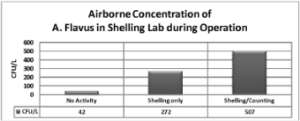
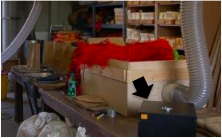
The WWC identifies spikes in spore concentration during operations
Sampling for Swine Influenza Virus (SIV)
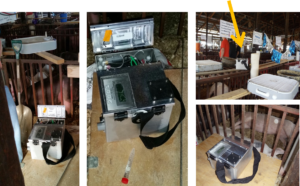
- Simple straightforward WWC air samples
- “Just work” at the push of a single button
- Months of demanding testing in rural Ohio
Real-Time Microfluidic Nano-Aerosol Monitoring System in Large Air Spaces
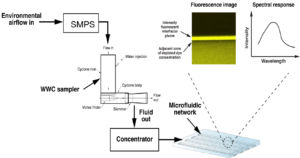
- Microchannel coupled with the WWC
- For nanoparticles 150 µg – 15 mg/mL
Residential Shower Studies
- WWC in shower
- 5600 fungal spores/liter air
- Intensive cleaning reduces level by only 30%
- Lung pathogens detected
Experimental Shower Studies
Samples: bioaerosol, biofilm, water
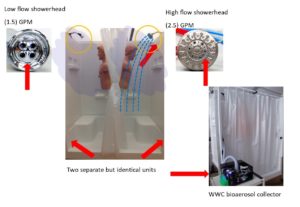
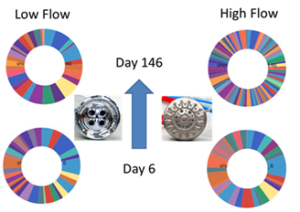
Development of diverse biofilms
